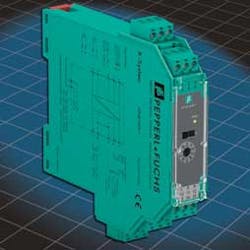New pipeline defect prove-up technology
The new 3D Toolbox developed by partners Technical Toolboxes Inc., Houston, and Seikowave Inc., Lexington, Ky., is designed to transform the way pipeline owners, operators, and their select pipeline integrity service vendors prove-up pipeline defects identified during in-line and routine inspections.
The complete packaged solution consists of hardware (the 3D pit gauge) and software (image processing and integrated defect assessment software including FSS 1, 2, 3, ASME B31G, RSTRENG).
The firms say their 3D Toolbox addresses the industry's needs for repeatable and accurate defect measurements, analysis, and storage that can comply with and exceed federal and state regulations and safety requirements.
The system requires no special ditching and is rugged. It displays an average image footprint of 1 sq ft that has micron accuracy and is repeatable with no special training. This solution can be easily transported and set up, and images can be captured and processed in seconds.
The 3D Toolbox will augment any user's existing prove-up tools with a single source for gathering and analyzing pipeline integrity information. The companies note that this will help operators manage risk better, lower operating costs, and improve overall pipeline performance.
The product promises users the ability to perform a complete analysis in the field or make real-time pipeline defect data available to the central office, thus enabling more cost-efficient field data collection and analysis. Personnel in the field will be able to connect and update data from laptops, tablets, smart phones, and other portable devices.
Source: Technical Toolboxes Inc., 3801 Kirby Drive, Suite 520, Houston, TX 77098.
1-channel signal conditioner
Here's the new KFU8-VCR-1 transmitter power supply signal conditioner.
Featuring various inputs for standard voltage and current inputs, these 1-channel units offer installation flexibility to suit a range of application needs. Input and output signal ranges are selected by switches located on the front of the device. This enables fast, easy setup and setting duplication, without the need for any software and eliminating the need for input/output scaling. These new transmitter power supply signal conditioners promise to deliver easy-to-implement and cost-effective power isolation in nonintrinsically safe applications that don't require a display or scaling.
Source: Pepperl+Fuchs Inc., 1600 Enterprise Parkway, Twinsburg, OH 44087.



